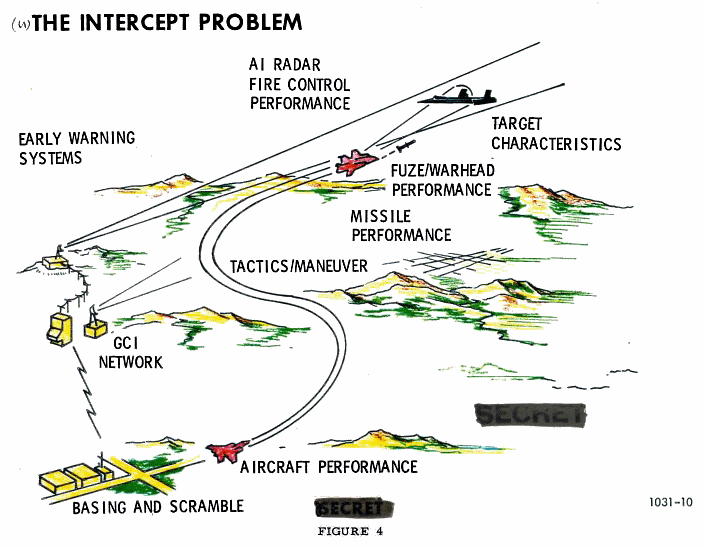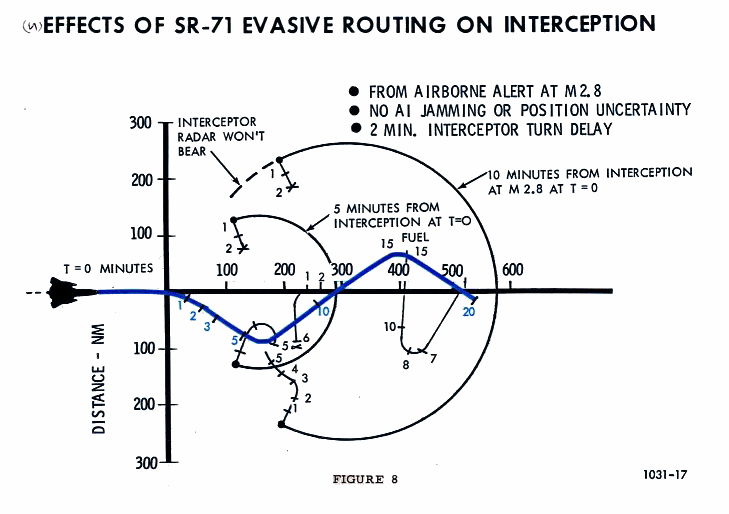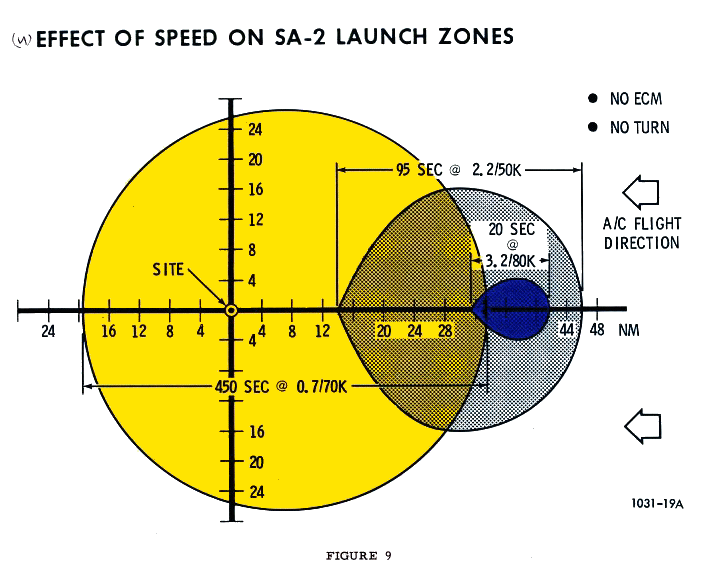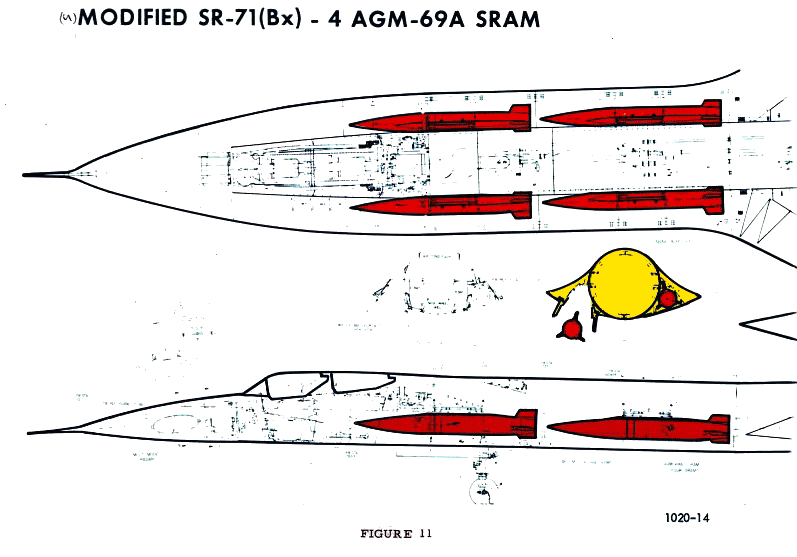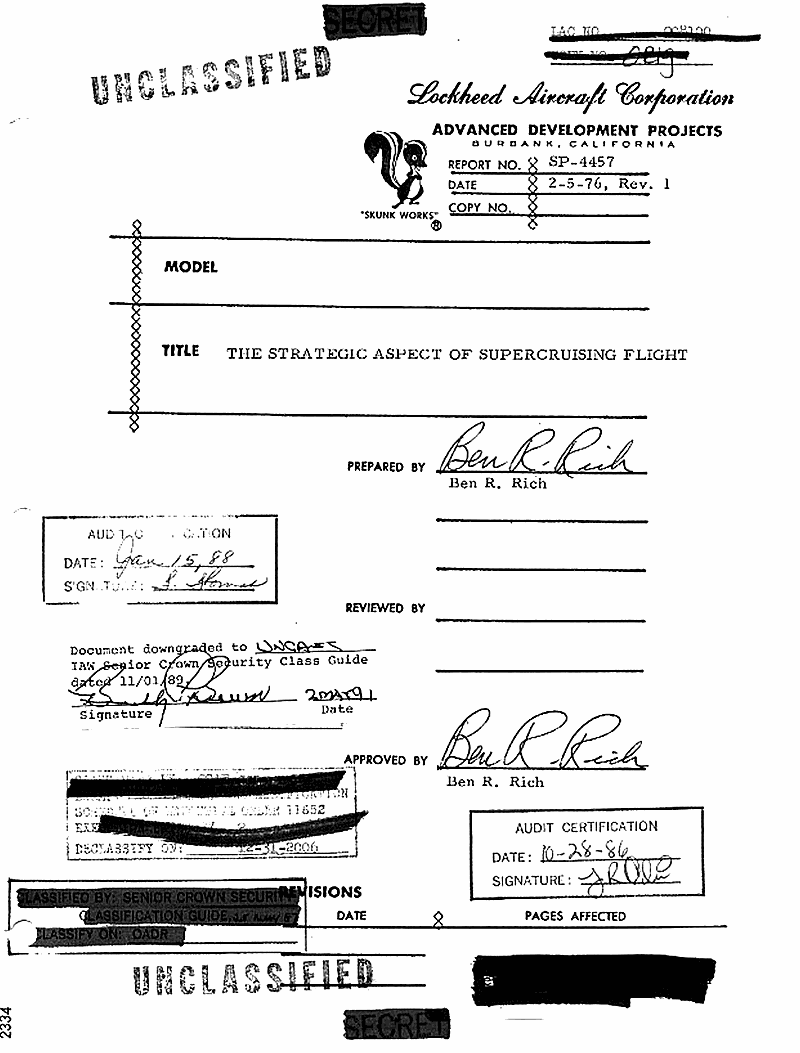
THE STRATEGIC ASPECT OF SUPERCRUISING FLIGHT
BY Ben R. Rich
For Delivery at the SUPERCRUISE MILITARY AIRCRAFT DESIGN CONFERENCE
17 through 20 February 1976
THE STRATEGIC ASPECT OF SUPERCRUISING FLIGHT
The vulnerability of aircraft to missiles and radar controlled guns was vividly demonstrated in the 1973 Mid East War where 443 aircraft were destroyed in eighteen days. Simulations show that the survivability of aircraft increase primarily with increases of speed, altitude, maneuverability and ECM. These have been confirmed by experience with the SR-71, the only United States supercruising military aircraft. There are other secondary factors that contribute to survivability such as the various aspects of stealth and size, reaction or response times, etc.
The physical and aerodynamic requirements for efficient supersonic flight vehicles ail result in increases of flight altitude with increase in flight speed and vice versa. Speed increase is necessary to meet the mass flow requirements of air breathing propulsion systems. Super-cruiser parametric studies show that as cruise speed increases above Mach 2.0, altitudes for efficient cruise exceed 50,000 feet.
Let us now review the threat to vehicles which cruise at high Mach number and high altitude. Figure 1 depicts Soviet missiles, gun, and aircraft capability vs. altitude. Shown on the right hand column are typical cruise altitudes for strategic aircraft as a function of speed. The data show that for altitudes below 60, 000 feet, aircraft aire vulnerable to a multiplicity of weapon systems. Focusing on the USAF's only current supercruising aircraft -- the YF-12/SR-71 series, which cruise above Mach 3. 0 and 80,000 feet -- I will limit my comments to these aircraft. The aircraft has maneuver capability better than 2. 5 g's. The double delta planform of the SR-71, as shown in Figure 2, is designed, with sharp leading and trailing edges; no right angle intersections, inclined vertical fins, etc. to achieve a low radar cross section. The aircraft, illustrated in Figure 3, is constructed, with over 20 percent of its surface area, of high temperature composite material to give a radar cross section under 10 square meters. The anti-radar design background was given in a paper delivered by Kelly Johnson to the Radar Camouflage Symposium at Wright-Patterson Air Force Base on October 3, 1975, entitled "Reduction of Radar Cross Section of Large High Altitude Aircraft. " (5)
Air-to-Air Threat
Currently, there is no real operational air-to-air threat to the SR-71. Let us consider the Soviet's most advanced aircraft, the MiG-25 FOXBAT. Figure 4 provides an overview of the main elements of the intercept problem. Figure 5 gives the operational steady state and zoom envelopes of the FOXBAT. If you assume the pilot sitting in the cockpit on alert, the FOXBAT climbout and missile performance are shown in Figure 6. The data show that it takes 8 minutes from brake release to reach its maximum steady state cruise altitude, assuming no maneuvering. Also shown are the FOXBAT radar and the AA-6 missile characteristics with its aerodynamic and seeker limits. The shaded area shows the limited attack zone against a cruising SR-71. To better appreciate the time and distances involved, Figure 7 shows the FOXBAT climb characteristics on a head-on, fly-over attack against penetrators approaching at speeds up to Mach 6. Just during the time required for the FOXBAT to reach its cruise altitude (8 minutes), the Mach 3.2 aircraft has penetrated 240 nm, while Mach 6 attacker has penetrated 480 nm. The data assumes no evasive maneuvering by either aircraft and instantaneous reaction by the FOXBAT. The effect of maneuvering is shown in Figure 8. This figure assumes that the SR-71 makes a 45 degree weave maneuver. Using FOXBAT performance characteristics, from airborne alert, and for various start locations, the figure shows that no clearly successful intercept can be made. It can be generally concluded that the air-to-air intercept problem is at the present time extremely marginal versus a high supersonic Mach number maneuvering target.
Surface-to-Air Threat
The Surface-to-air missile intercept problem also needs to be considered. Figure 9 shows the SA-2 missile footprint for three nonmaneuvering target speeds/altitude combinations. The way increasing speed/altitude reduces SA-2 capabilities is apparent from the diminished size of the vulnerable area. If you take a vertical cut of this same SA-2 envelope, Figure 10, the effect of speed and altitude are shown. No intercept is possible at speeds above Mach 3.2 and altitudes above 90, 000 feet.
Any type of maneuver considerably reduces the SA-2 capability as was shown in the Viet Nam war. In the several hundred flights over the Hanoi -Haiphong areas, no losses or damage were experienced. Discussions with regards to the SA-5 GAMMON missile exceed the classification of this paper. The above discussion is limited to nonnuclear missiles, no attempt will be made to discuss the nuclear threat.
Strategic Applications for Supercruise Aircraft
There are three strategic missions for a supercruising aircraft: reconnaissance, surveillance, and offense or strike.
The SR-71 is currently performing the reconnaissance and surveillance mission for the USAF Strategic Air Command. The aircraft has been operational in the South East Asia Theatre for over seven years. During the Viet Nam war, it made several hundred combat flights over North and South Viet Nam. During the 1967 Mid East war, operating from the Continental United States, the SR-71 completed several successful overflights of the Suez-Sinai battlefronts. In all these operations, the SR-71 suffered no loss or damage from any hostile action. Since its first flight in 1964, the aircraft has approximately 5, 500 hours over Mach 3.0.
Let me show you how we can exploit supercruising for the strike concept.
During 1965-1966, the YF-12 interceptor successfully demonstrated the firing of missiles from over Mach 3. 0/80, 000 feet. The YF-12 successfully launched 13 AIM-47 missiles (Hughes GAR-9). Twelve successful shots, direct hits or lethal near misses, were achieved on subsonic drone targets flying at sea level to 40, 000 feet over land and sea. The one failure was attributed to a guidance malfunction.
Figure 11 shows a strike version of the SR-71 -- called the Bx -- with four AGM-69A SRAM missiles. The range of the SRAM missile can be extended by a factor of 4 when launched at Mach 3. 0 and 80,000 feet, as shown in Figure 12. This significant improvement in range derives from the large potential and kinetic energy imparted to the missile by the high altitude and high speed of the aircraft at cruise. The current SRAM is a nuclear missile with no terminal guidance. The CEP's are therefore not sufficiently accurate for high target kill probabilities; for example, at 100 nm range the CEP is approximately 1,500 feet and at 300 nm it is approximately 3,600 feet. However, with pre-launch navigational update and new improved gyros, these CEP's can be halved. Accuracy can be further improved, of course, by terminal guidance, the discussion of which is the subject of other papers.
In summary, the super cruise concept when applied to the strategic strike mission can be complementary to the B-1 mission. It provides a highly survivable weapon system and could dilute the Soviet defense system.
Conclusions
Although the discussion has been on strategic missions, the lessons learned from the SR-71's operation can be applied to a Tactical Supercruiser or an Advanced Tactical Fighter. Significant improvements have been made during the last few years in supersonic aerodynamics, propulsion, materials, avionics and stealth technologies. All these items tend to improve performance and survivability for advanced supersonic aircraft. There can be no doubt that the SR-71 survivability factors: supersonic speed, high altitude, high stealth, maneuverability and ECM will also provide a high probability of survival to aircraft performing tactical missions.

